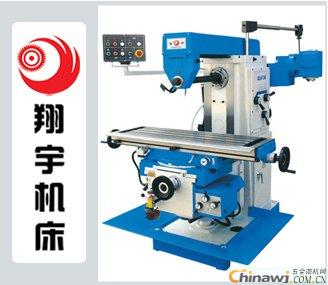1. Before operating a vertical milling machine, proper preparation is essential to ensure smooth and accurate machining.
Preparations include inspecting the machine, organizing the workspace, understanding the workpiece drawings and process specifications, checking the workpiece blanks, selecting the correct clamping method, and preparing the necessary tools, cutters, and measuring instruments.
(1) Machine Inspection: Before starting, check that all control handles are in the neutral position and ensure that all moving parts are properly lubricated according to the manufacturer's guidelines. Run the machine at low speed for a few minutes to check for unusual noises or vibrations in the main spindle and feed gearbox. Ensure that all movements of the worktable are smooth and reliable, and verify that the lubrication system is functioning correctly.
(2) Workspace Organization: A clean and well-organized workspace helps reduce downtime and improves efficiency. Make sure the area is free from clutter, and keep raw materials, semi-finished products, and finished goods clearly separated. Minimize unnecessary movement by arranging tools and equipment within easy reach. Keep the surrounding area tidy to avoid tripping hazards and maintain a safe working environment.
(3) Understanding Drawings and Process: Familiarize yourself with the workpiece design, dimensions, tolerances, and technical requirements. Review the process specifications carefully. If any questions arise, consult a supervisor or technician before proceeding. This ensures that you understand exactly what needs to be done and reduces the risk of errors.
(4) Checking Workpiece Blanks: Inspect the size and condition of the workpiece blank based on the drawing. Sort the blanks by machining allowance and prepare them in order of processing. Remove any casting sand, welding slag, or burrs to prevent damage during machining. For workpieces coming from previous stages, perform a quality check to identify any defects or inconsistencies early.
(5) Clamping Method Selection: Choose an appropriate clamping method based on the shape and complexity of the workpiece. For long or curved materials, straighten them before clamping. Larger components should be measured and positioned carefully to avoid deformation or improper fixation, which could lead to accidents or poor results.
(6) Tool and Gauge Preparation: Prepare all required cutters, tools, and gauges in advance. Place them in a convenient location, but not on the machine’s guide surfaces, to avoid interference and improve workflow. Before starting, verify that the measuring instruments are calibrated and accurate to ensure precise machining results.
2. Safety in Milling Operations
Ensuring safety is crucial in all milling operations. Following safety protocols not only prevents accidents but also promotes a professional and efficient working environment. Here are key safety measures to follow:
1. Always wear appropriate personal protective equipment (PPE), including closed-toe shoes, long sleeves, and a secure head covering for female workers. Avoid wearing loose clothing, scarves, or jewelry that could get caught in the machine. Do not wear gloves while operating the milling machine.
2. Keep a safe distance from the cutting area. Never touch the rotating cutter or the workpiece surface directly. Use an iron hook to remove metal shavings, as they can be sharp and dangerous.
3. Do not use cotton cloth to wipe moving parts like the workpiece or the cutter. Stop the machine before measuring the workpiece to avoid injury.
4. When performing high-speed milling, always wear safety goggles to protect your eyes from flying debris.
5. Secure all tools, measuring devices, and workpieces in stable positions to prevent them from falling and causing harm. Ensure the workpiece is firmly clamped to avoid it becoming loose during operation.
6. When handling heavy objects like the workpiece or indexing head, ask for assistance or use lifting equipment. Never attempt to lift heavy items alone.
7. When using a grinding wheel, stand to the side to avoid injury in case the wheel breaks.
8. Do not remove protective covers from the machine. These covers are designed to prevent exposure to moving parts such as belts and gears.
9. Use only 36V low-voltage lighting on the milling machine and follow all electrical safety regulations.
10. Avoid distractions while operating the machine. Never engage in unrelated activities. Always turn off the machine when leaving the workstation.
This article discusses: vertical milling machine http://

Double Thread Rod,flanged ends Double Thread Rod,Double Thread Rod Link bolt
Hebei Quanfang Fastener Co., Ltd , https://www.quanfangfastener.com